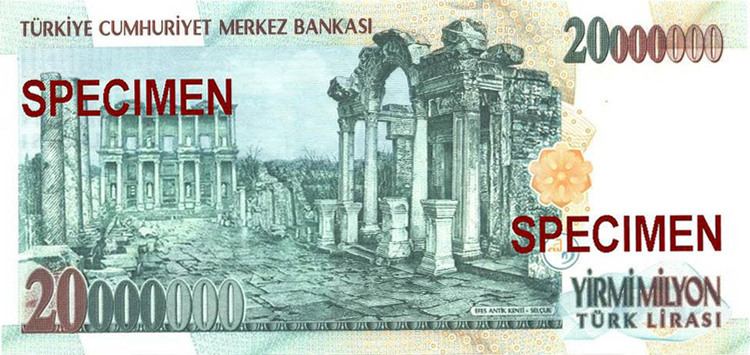 | ||
In 1926, the Ministry of Finance introduced notes for the Republic of Turkey in denominations of 1, 5, 10, 50, 100, 500 and 1000 Turkish lira. These were the last notes printed with both French and Turkish (in the Arabic script) texts on them. Each note carried the portrait of Mustafa Kemal Atatürk.
Between 1937 and 1939, the Central Bank of Turkey introduced new notes with Turkish texts in the Latin alphabet, bearing the portrait of President İsmet İnönü. İnönü notes caused disputes at the time. Denominations of 2½, 5, 10, 50, 100, 500 and 1000 Turkish lira were issued. 1 Turkish lira notes were reintroduced in 1942, followed by 50 kuruş notes which weren't released in the country due to World War II in 1944. These two lowest denominations were replaced by coins after the War.
Atatürk reappeared on a subsequent series of notes in the early 1950s. The 2½ Turkish lira notes were replaced by coins in 1960, with the same happening to the 5 and 10 Turkish lira notes in 1974 and 1981. Higher denomination notes were introduced during the 1980s and 90s: 5000 Turkish lira in 1981, 10,000 Turkish lira in 1982, 20,000 Turkish lira in 1988, 50,000 Turkish lira in 1989, 100,000 Turkish lira in 1991, 250,000 Turkish lira in 1992, 500,000 Turkish lira in 1993, 1,000,000 Turkish lira in 1995, 5,000,000 Turkish lira in 1997, 10,000,000 Turkish lira in 1999 and 20,000,000 Turkish lira in 2001. The higher values of the "E7 Emission Group" banknotes (1992 250,000 TL and later and higher value notes) are exchangeable for new Turkish liras at a rate of 1,000,000 Turkish lira to 1 new Turkish lira at branches of the Central Bank of the Republic of Turkey until 31 December 2015, after which time they will have no value. The 50,000 Turkish lira note ceased to be redeemable on 4 November 2009, and the 100,000 Turkish lira note on 4 November 2011.
